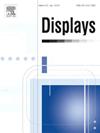内窥镜深度估计的深度学习:综述
IF 3.7
2区 工程技术
Q1 COMPUTER SCIENCE, HARDWARE & ARCHITECTURE
引用次数: 0
摘要
深度估计是计算机视觉的一项基本任务,对于内镜手术导航等应用至关重要。本文全面回顾了利用深度学习的内窥镜深度估计算法的最新进展。我们首先简要描述深度估计背后的基本原理,以及如何从单目和双目线索生成深度图。然后我们分析内窥镜数据集的特征。随后,我们概述了深度学习在内窥镜深度估计中的应用,包括监督、自监督和半监督学习方法。我们研究了每种方法的原理、优缺点及其在实际应用中的性能。此外,我们总结了当前深度学习方法在内镜深度估计中的性能,并探讨了模型鲁棒性和泛化能力的重要性。最后,我们提出了潜在的未来研究方向,例如探索收集高质量数据或使用模拟数据来克服当前数据集限制的方法,以及开发轻量级模型以增强实时性和鲁棒性。本研究旨在为内镜深度估计领域的研究人员提供一个全面的综述,从而促进该领域的进一步发展。本文章由计算机程序翻译,如有差异,请以英文原文为准。
Deep learning for endoscopic depth estimation: A review
Depth estimation is a fundamental task in computer vision, crucial for applications such as endoscopic surgical navigation. This paper comprehensively reviews recent advancements in endoscopic depth estimation algorithms utilizing deep learning. We start by briefly describing the basic principles behind depth estimation and how depth maps can be generated from monocular and binocular cues. We then analyze the characteristics of the endoscopic dataset. Subsequently, we provide an overview of deep learning applications in endoscopic depth estimation, encompassing supervised, self-supervised, and semi-supervised learning methods. We examine each method’s principles, advantages, and disadvantages and their performance in practical applications. Additionally, we summarize the performance of current deep learning methods in endoscopic depth estimation and explore the importance of model robustness and generalization capabilities. Finally, we propose potential future research directions, such as exploring methods for collecting high-quality data or using simulated data to overcome current dataset limitations, and developing lightweight models to enhance real-time performance and robustness. This study aims to offer a comprehensive review for researchers in the field of endoscopic depth estimation, thereby fostering further development in this area.
求助全文
通过发布文献求助,成功后即可免费获取论文全文。
去求助
来源期刊

Displays
工程技术-工程:电子与电气
CiteScore
4.60
自引率
25.60%
发文量
138
审稿时长
92 days
期刊介绍:
Displays is the international journal covering the research and development of display technology, its effective presentation and perception of information, and applications and systems including display-human interface.
Technical papers on practical developments in Displays technology provide an effective channel to promote greater understanding and cross-fertilization across the diverse disciplines of the Displays community. Original research papers solving ergonomics issues at the display-human interface advance effective presentation of information. Tutorial papers covering fundamentals intended for display technologies and human factor engineers new to the field will also occasionally featured.
 求助内容:
求助内容: 应助结果提醒方式:
应助结果提醒方式:


